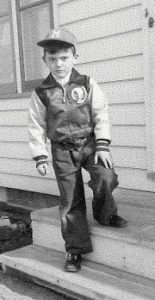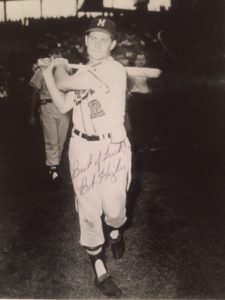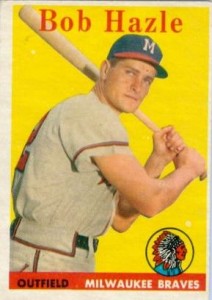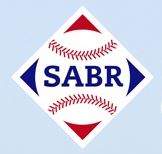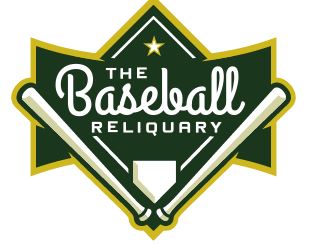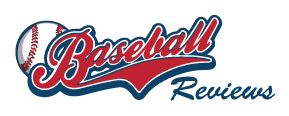Heroes are more often born out of circumstances than planning. That was the case with one of my boyhood baseball heroes, who – aided by circumstance – took the National League by “storm” in 1957. I’m talking about Bob “Hurricane” Hazle, who more than held his own in terms of heroics on the Milwaukee Braves’ 1957 pennant (and World Series) winning squad. In fact, for a couple of months that year, Wiffle (R) Ball games in and around Milwaukee saw as many youngsters emulating Bob Hazle as were patterning their stances after Braves’ stars and future Hall of Famers Hank Aaron and Eddie Mathews. Note: I was a six-year-old baseball fanatic and Milwaukee native when the Braves became Milwaukee’s team in 1953 – and a fan-atic by 1957.
What can you say about Hurricane Hazle? He came up to the Braves at the end of July, and for the rest of the year, nobody could get him out. I’ve never seen a guy as hot as he was – ever. …. I don’t know what happens to suddenly make a minor league ballplayer into Babe Ruth, but Hazle was right out of “The Twilight Zone.” We were hanging in there pretty well before he arrived, but he just picked us up.
Hall of Famer Eddie Mathews
From the book “Eddie Mathews and the National Pastime”
Hurricane Hazle’s Milwaukee Story
On July 11, 1957, the Milwaukee Braves – who had finished just one game behind the NL Champion Dodgers in 1956 – brought a 44-35 record (three games behind the league-leading Cardinals) into a game against the Pirates (in Pittsburgh). One the very first play in the bottom of the first inning, Braves center fielder Billy Bruton, chasing down a fly ball to shallow left by Pirates’ lead-off hitter Bill Virdon, collided with shortstop Felix Mantilla (the ball fell in for a double). Both Mantilla and Bruton were knocked out of the game. Mantilla was back on the field in a few weeks, but Bruton – who had an eight-stitch cut on his lip and, even worse, a torn ligament in his right knee – was out for the season and headed for surgery.
Braves’ fans (including this soon to be ten-year-old) were devastated. Bruton was the team’s leadoff hitter and a slick fielding center fielder, who had led the NL in stolen bases three of the past four seasons. The hopes for catching the Stan Musial-led Cardinals now seemed out of reach.
Bruton’s injury led to a series of moves that saw 2B Red Schoendienst move to the leadoff spot, Hank Aaron move to center field, Andy Pafko to right field and journeyman outfield Nippy Jones (who hadn’t played in the majors since 1952) move from the Triple A Sacramento Solons (PCL) to a reserve (1B/OF) role with the Braves. Even catcher Del Crandall found himself taking a few turns in the outfield. Also in the mix was emerging power hitter Wes Covington, a stabilizing regular in left field.
Bob Hazle first picked up the nickname “Hurricane” during a 1954 stint in the Venezuelan winter league; a response to the fact that his home state of South Carolina was hit by Hurricane Hazel that October. The nickname resurfaced when he took the National League “by storm” in 1957.
Still the Braves’ felt they needed more. So, in late July, they called up Bob Hazle, a 26-year-old outfielder who was hitting .279-12-58 at with the Triple A Wichita Braves. The 6-foot, 190-pound left-handed hitter was initially slated to spell the 36-year-old Pafko (the Braves’ outfield was now Covington in left, Aaron in center and Pafko in right). Hazle got in his first game on July 29 – as he sacrificed in a pinch-hitting role. On July 31, with the Braves (59-41, and one tie) in basically a dead heat with the Cardinals (58-40), Hazle got his first start in right field.
Hazle went one-for-four in his first start in right field for the Braves (a 4-2 win over the Pirates), but there was much more to come. In 21 August games, Hazle hit .493 (33-for-67), with four home runs, 21 RBI, 16 runs scored and 11 walks versus just eight strikeouts. By the end of August, the Braves were 79-48 – and held a 7 ½ game lead over the Cardinals.
Hazle slowed down a bit in September, but still hit over .300 (.317), with two home runs, 10 runs scored and five RBI (seven walks and seven strikeouts) for the month. The Braves, with the help of their new right fielder, finished the season at 95-59, eight games up on the Redbirds. (In the games in which Hazle appeared, the Braves played .659 ball, while their winning percentage in games – for the entire season – in which Hazle did not appear was .591.)
Hazle ended the season hitting .403 in 41 games with 12 doubles, seven home runs, 27 RBI, 26 runs scored and 18 walks versus just 15 strikeouts – as well as praise from his teammates for playing a key role in bringing the World Series to Milwaukee – not to mention a lot of love from Wiffle Ball-playing youngsters.
Unfortunately, like many hurricanes, things calmed down considerably once the storm blew through. Hazle hit just .154 in the World Series, but did go two-for-four with a run scored (from the leadoff spot) in the decisive Game Seven – won by the Braves 5-0 behind Lew Burdette. He got off to a slow start in 1958 – hampered by a couple of beanings and an ankle injury – and his contract was sold to the Detroit Tigers on May 24. At the time, he was hitting just .179, with no home runs and five RBI in 20 games. With the tigers that season, he put up a .241-2-5 line in 43 games. Hazle spent 1959 and 1960 back in the minors, before retiring as a player at the age of 30. Notably, he did retire with a .310 career average (in 110 games over three seasons).
Bob “Hurricane” Hazle – The Back Story
Bob “Hurricane” Hazle was born. Robert Sidney Hazle, in Laurens, South Carolina, on December 9, 1930. He was the last of six children (four sons) in the Hazle family. Of the four Hazle sons, three (Robert, Joseph and Paul) signed professional baseball contracts, but only Bob made it to the major leagues. (Paul made it as high as the Norfolk Tides (B-level, Piedmont League), while Joe made to the Double-A Chattanooga Lookouts of the Southern Association.
Bob Hazle was a Hurricane long before he got the nickname – earning sixteen sports letters in high school (baseball, football, basketball and tennis). Hazle, who graduated from high school in 1949, signed with the Cincinnati Reds in 1950 (reportedly choosing to pass on a football scholarship to the University of Tennessee). While in the Cincinnati system, he was selected to the Texas League all-star team in 1951), when he hit .280 with the Double A Tulsa Oilers as a 20-year-old.
Military service, however, interrupted this promising start (and a potential callup to the Reds), as Hazle spent two years in the Army – returning to Tulsa in 1953, where he hit .272 with three home runs in 57 games. In 1955, Hazle hit just .224 with four round trippers at Triple A Indianapolis in 1954 – a discouraging season. However, he bounced back with a .314 average and 29 home runs at Double A Nashville in 1955 – earning a late-season callup to the Reds (three hits in just 13 MLB at bats.)
Prior to the state of the 1956 season, Hazle and pitcher Corky Valentine (who had a 6-14, 4.81 MLB record over 1954-55) were traded to the Milwaukee Braves for 34-year-old first baseman George Crowe (who had hit .281 with 15 home runs the previous season). The Braves assigned Hazle to their Triple-A team in Wichita, where he hit .285-13-46 in 124 games – despite a mid-season knee injury that hampered his mobility. He was back at Wichita in 1957 and was hitting .279-12-58 when the Braves called him up following Billy Bruton’s injury. And the rest, as they say, is history.
BBRT Note: Bob Hazle died on April 25, 1992, in Columbia, South Carolina, of a heart attack.
I tweet baseball @DavidBBRT
Follow me there for new post notifications.
Member: Soceity for American Baseball Research (SABR); The Baseball Reliquary; Baseball Bloggers Alliance.
